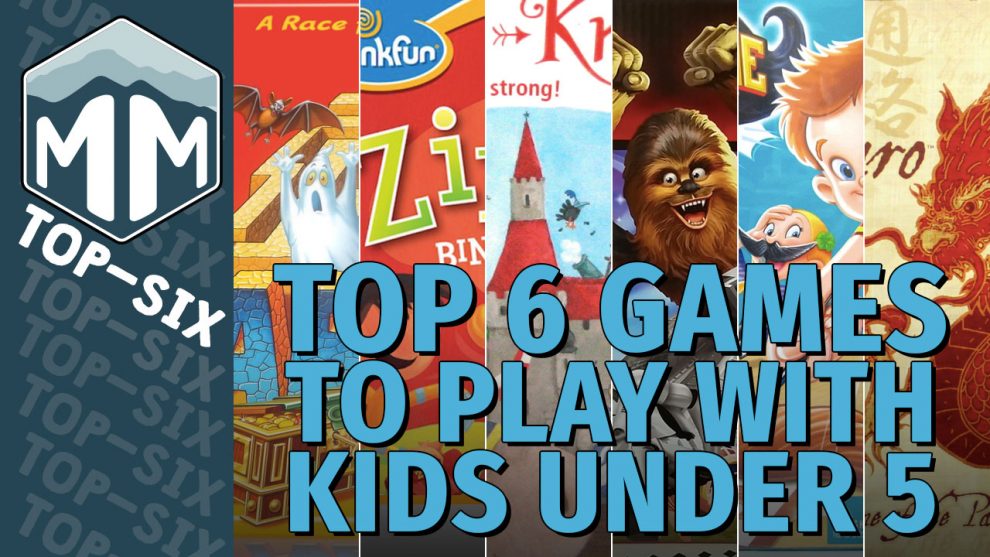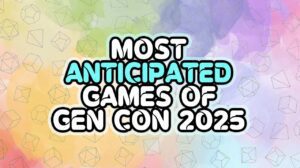These days the term “kid’s game” can sometimes have negative connotations, resonating back through the decades to mindless games of Candy Land, or never ending games of Chutes & Ladders. As a parent of 4 kids, I see the merit in those games: pattern and color recognition, basic counting, taking turns, learning how to lose with grace; those are valuable skills my kids need to succeed in life.

The problem is that I don’t want to play those games. To an adult who has, arguably, mastered pattern and color recognition (I’m still working on the taking turns thing), I find them incredibly boring. So as a parent, what are some games that I can play with my kids that I’ll enjoy as well? Note that this list focuses on games that younger kids (anywhere from 3-7) may enjoy. Your kids might not be ready for them, or your little Einstein might find them too easy, but they’re all worth a shot! Let’s go!
Wait, my kids are older now. Check out my Top 6 board games for older kids.
Labyrinth
Labyrinth is a 7×7 board with 50 tiles showing treasure, tunnels, dead ends, monsters, and all sorts of dungeon-crawly type things. 16 of the tiles are glued to the board with spacing that allows the other tiles to slide in between them. The tiles are shuffled and laid face up onto the board with the single leftover tile being given to the first player.
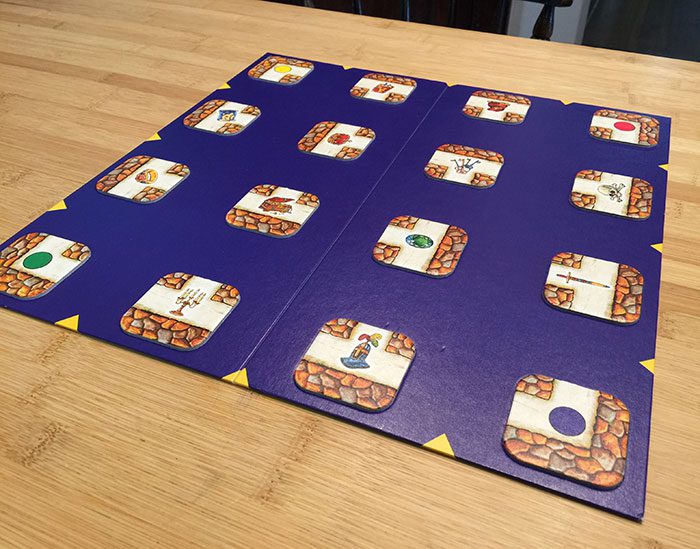
On your turn you’ll take your tile, rotating it in any way you desire, and place it into one of the open lanes indicated by the yellow triangles around the outside of the board. You’ll accomplish your purpose, but in doing so you’ll push one tile out the other side, which is the tile that the next player begins with.

After placing your tile, you’ll attempt to move your player marker to, or as close as possible to, a specific treasure indicated by a card that you were dealt at the beginning of the game. The game is over when one player is able to collect all of their treasure.
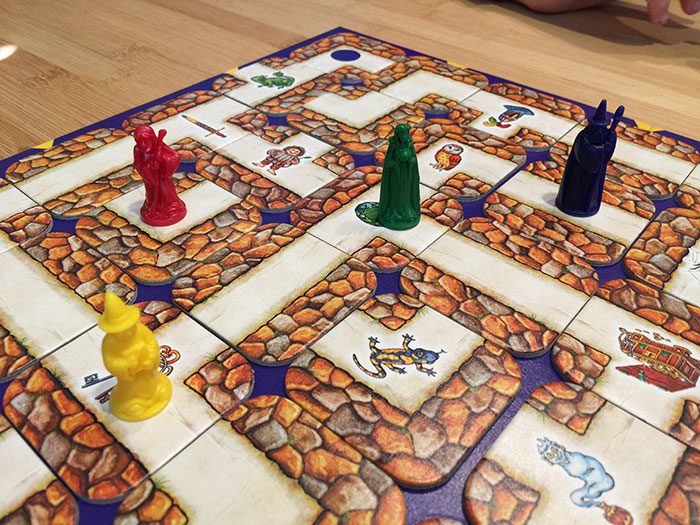
Labyrinth is an easy game. It’s light, and fun, and usually plays in less than 30 minutes. It’s bright, colorful, and has a good amount of choice, without being overwhelming for smaller kids. It also has really sturdy components so you can play it for years without it wearing out. Labyrinth is like a Where’s Waldo book in that kids will have to locate the treasure they’re looking for among the 50 tiles, and be able to work out a path to it so that they can collect it.
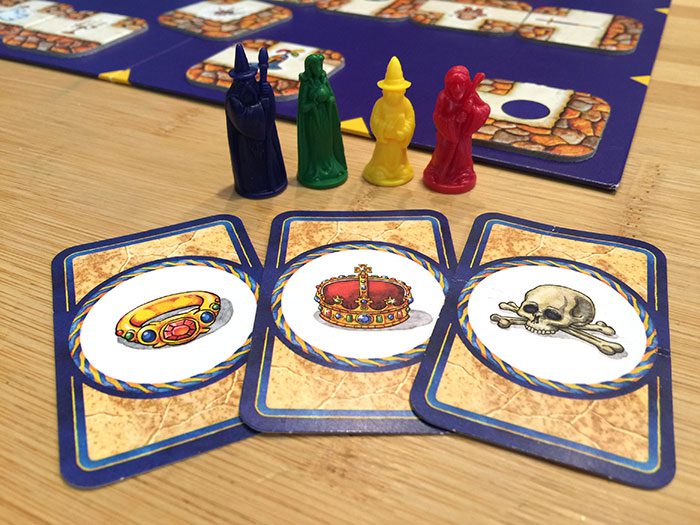
Teaches: Taking turns, pattern matching, color recognition, shape recognition, basic strategy.
Parents note: use an “all cards face up” variant and help your younger kids. Alternately, try a co-op game and work together with your youngest kids to collect the treasures. You’ll both enjoy the game, and building up those parenting wins gives you all the feels! If your younger kids are still struggling, try letting them “walk through walls”. They’ll think it’s a fun treat, and you won’t get frustrated when they can’t line up the paths.
Zingo!
At first glance some might dismiss Zingo as a mere Bingo clone, but that would be doing it a disservice. In Zingo one player reveals 2 tiles at a time using a really cool machine, then calls out their name (or shape if your child can’t read).
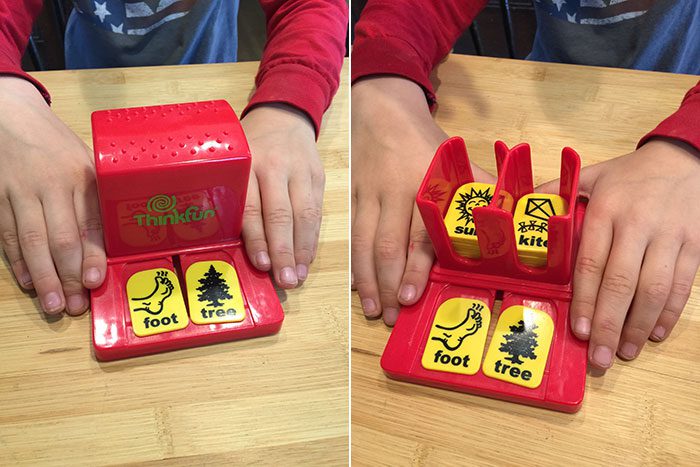
The first player to call that they have a matching shape gets to place that tile on their card. Cards are double sided and are comprised of a 3 x 3 grid of animals, vegetables, toys, and other very common shapes.
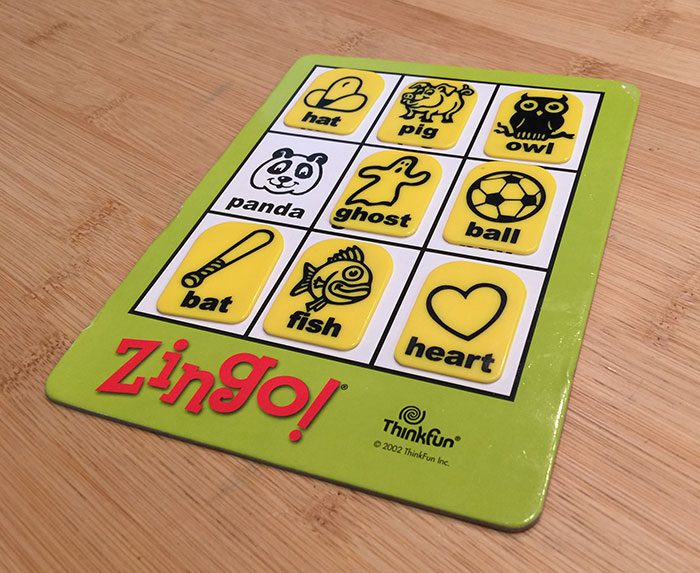
My kids love playing Zingo, even my 8 year old son. They love getting to use the machine to reveal the tiles, and to call out the shapes, and they love getting a tile to put on their own card. Zingo helps your kids learn shapes, pattern matching, and improves their reaction time.

Teaches: Paying attention, pattern matching.
Parents note: it’s a toss up whether you should call the tiles, or help your child. If they’re old enough to recognize common shapes then let them try calling out the shapes, but be ready to help them if they need it.
Castle Knights
In Castle Knights players work together, racing against a standard egg timer, to build a tower made from blocks of different colors, shapes, and sizes.Castle Knights is an ingenious game which requires players to pick up blocks of various shapes and sizes using a stretchy rubber band with 4 handles. The game includes a deck of cards which each display a different tower. Players will deal one card off the top then attempt to build that tower before the timer runs out. If you fail, “the king” moves one step closer to the castle.
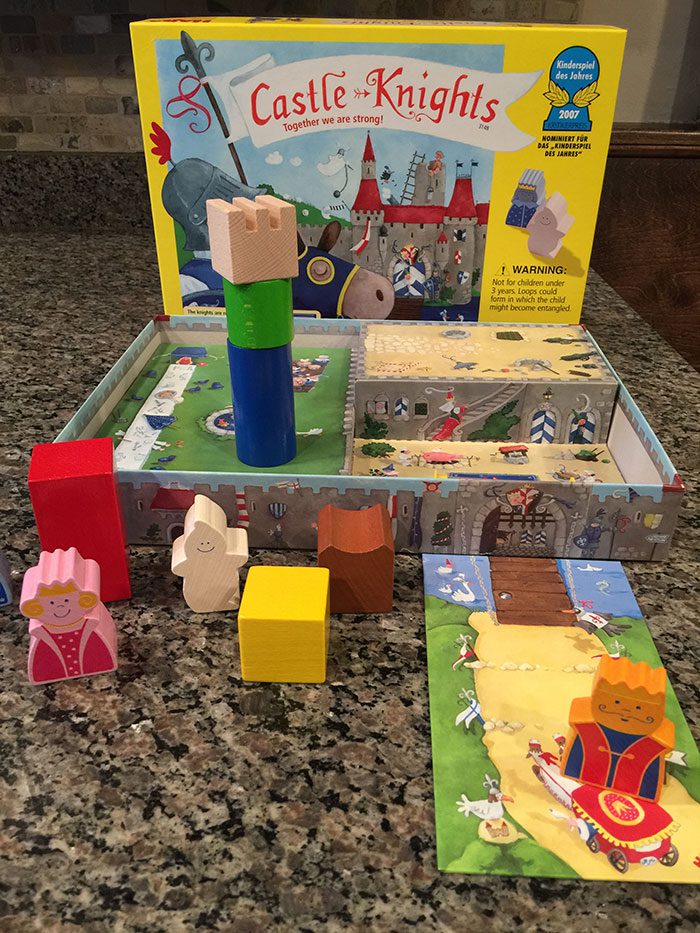
Castle Knights is a simple co-op dexterity game. Sounds like a challenge to pull off, but HABA manages it with ease; and because this is a HABA game the component quality is through the roof. Castle Knights is so amazingly clever that you can’t help but enjoy your time playing it. It does a great job teaching teamwork because that rubber band is pretty tricky to manage. Not only do you have to pull it the right way, but you have to grab a piece, move it to the correct location, and release it…then do 3 or 4 more within the time frame.
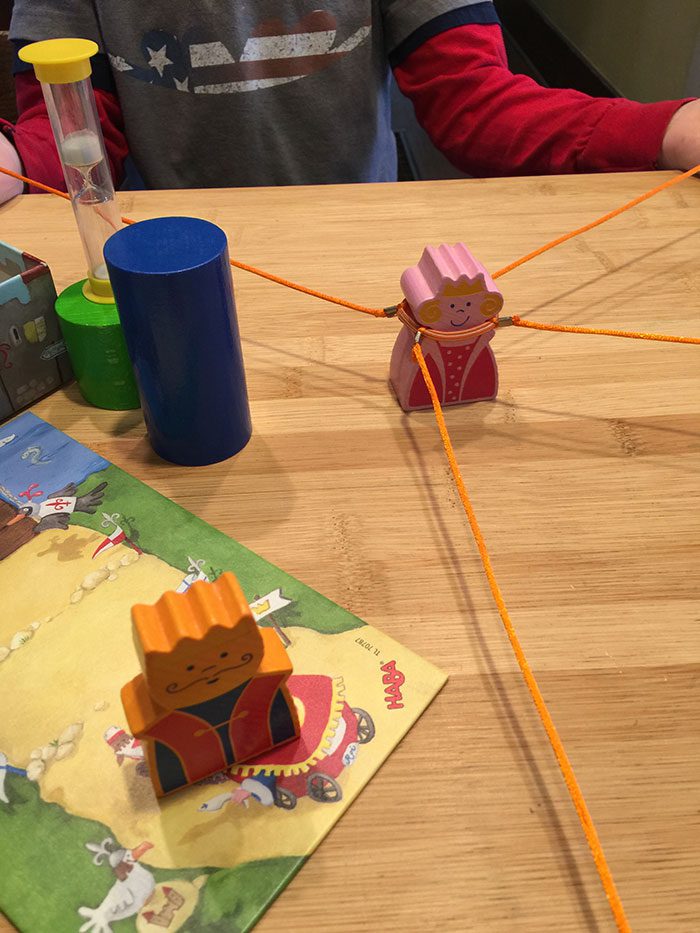
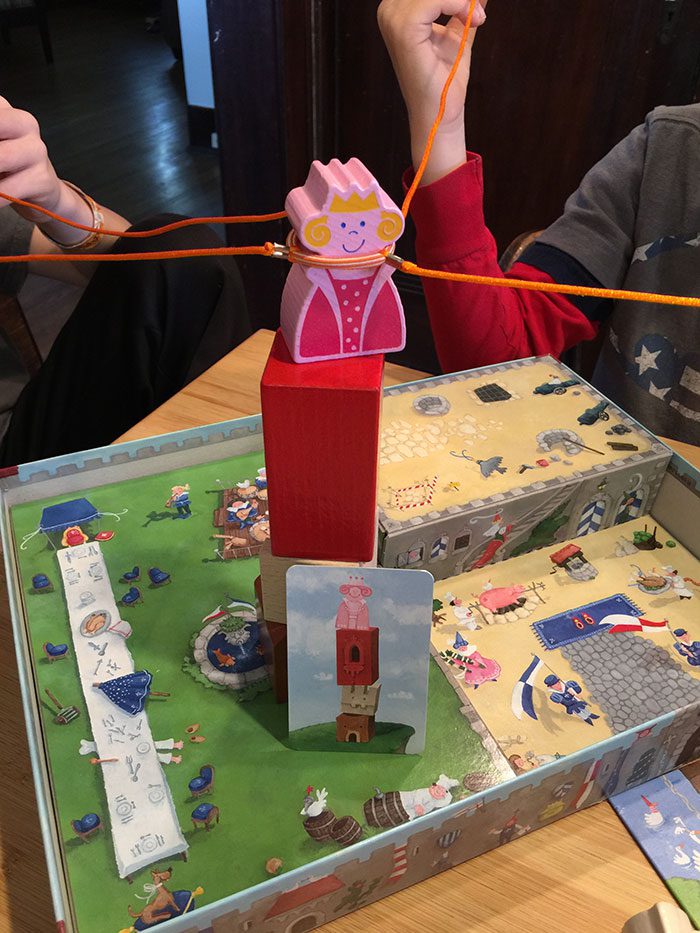
Teaches: Teamwork, coordination, pattern matching, color recognition, shape recognition, basic strategy.
Parents note: Castle Knights is great fun, but of all the games on this list, it might be the most challenging for younger kids, especially those with burgeoning motor skills. If your child isn’t up to the task, don’t despair. Deal cards off the top, then have them locate the block with their hands and build the tower without using the rubber band. They’ll still have a ton of fun, and you’ll get to watch them learn and grow.
Loopin’ Chewie / Loopin’ Louie
Protect your stormtrooper base from a rampaging Chewbacca in this mechanical game of blocking, bobbing, and dodging! Rrrrrrr-ghghghghgh!Loopin’ Chewie is a Star Wars licensed version of the game Loopin’ Louie in which 3 players try to prevent Chewbacca, out for a joyride in the Millennium Falcon, from dive bombing their base and wrecking the place. The player with the last stormtrooper standing wins the game.
In Loopin’ Chewie, each player is given an arm with a lever on it, and 3 blue stormtroopers discs. Chewbacca and the Millennium Falcon are attached to a central hub which, when turned on, causes Chewbacca to go zooming around in circles. As Chewbacca approaches your base you simply press a button to fend him off and cause him to skip over your base…or at least you hope that’s what happens.

There’s very little strategy or tactics in this game, just endlessly spamming your defense lever. But then you realize that there IS some skill involved. Loopin’ Chewie a game of timing, and lots of luck. Push your lever too soon and Chewie will go bouncing over it and take out a stormtrooper. Push it too late and he’ll skip your opponents and come back around for a second pass at your base. Mindless yes, great fun, absolutely!
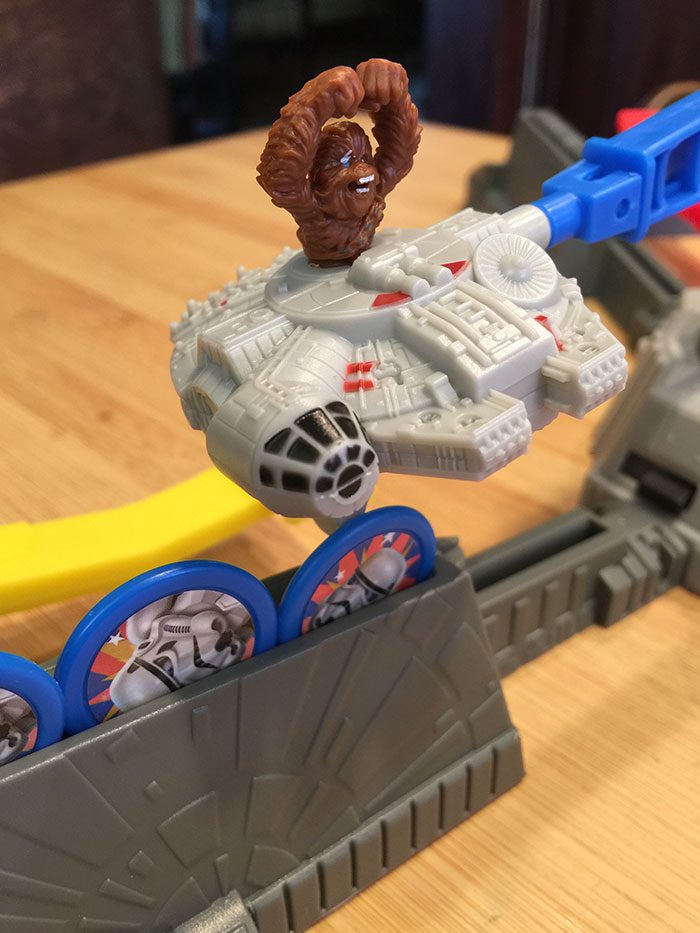
The single downside to this game is that it only plays 3 players; a strange choice given that Loopin’ Louie plays 4. Never fear, it’s so cheap that you can buy two sets and mash them together by 3d printing pieces which can be glued to the base. Now you can play with up to 6 players!
Teaches: Coordination, timing, basic strategy.
Parents note: Even 2 or 3 year olds will enjoy this one. Set up the game and let them sit down and bang away at their lever. Sure they’ll miss most of the time, and the game will be over fast, but it’s so fun to watch Chewie smash through the stormtroopers that you won’t mind.
Moustache Smash
Moustache Smash is a seriously fun and silly family game for 3 to 6 people. Be the first to smash your moustache down on a card matching either the color, or shape, of your moustache. Collect the most cards by the end of the game and you’re the winner!
Moustache Smash is a game of color, and pattern, matching, quick judgement, and fast timing. Players are each given one of 6 moustaches on long sticks. Each moustache is a different shape, and one of three different colors. A stack of cards containing pictures of the different shaped moustaches in different colors are combined with 2 special cards (moustache smash, and moustache pass).
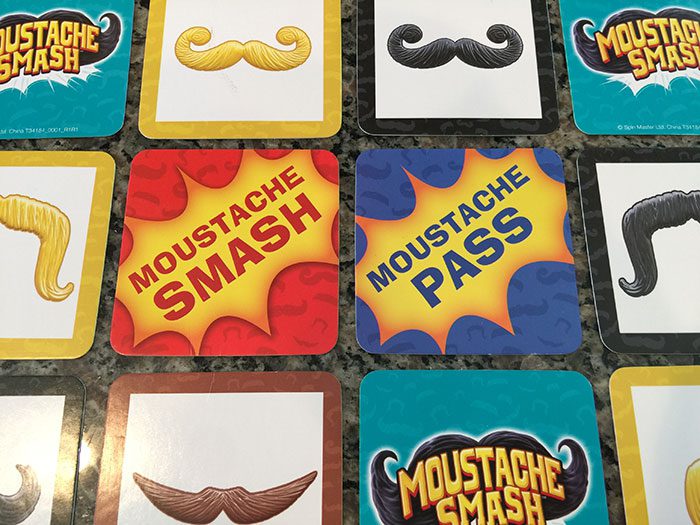
Players take turns flipping over cards from the stack. If a card matches either your moustache’s shape, or color, you slap it. The player who slaps it first wins the card. If you flip over a moustache pass card, players pass their moustaches to the left. If you flip over a moustache slap card everyone can slap. The player with the most cards at the end of the game wins.

Check out our full review of Moustache Smash.
Teaches: Coordination, color recognition, shape recognition.
Parents note: This game is so simple that even 2 or 3 year olds can participate. Watch out for kids who might be a little more aggressive as these sticks can leave a mark. Ouch!
Tsuro
Tsuro, pronounced SOO-row, is a beautiful tile laying game for up to 8 players. A board consisting of a 6 by 6 grid of is placed in in the middle of the table and each player is dealt 3 tiles. In turn order players choose which tile to place in front of their piece (and how they want to rotate the piece), which starts on any of the white lines at the edge of the board. Players advance their piece along the path shown on the tile, then draw a new tile.
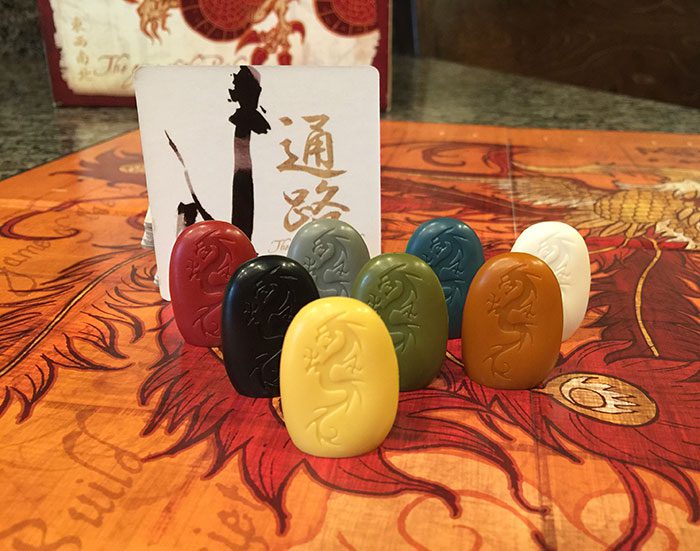
As the board begins taking shape players will need to decide if they take the safe path and stay away from others, or show daring and dive into the group. If at any time your path leads off the board your piece is out of the game. If your path leads directly into another player, both pieces are out of the game. The player whose dragon is still on their path after all other players have been defeated is the winner.
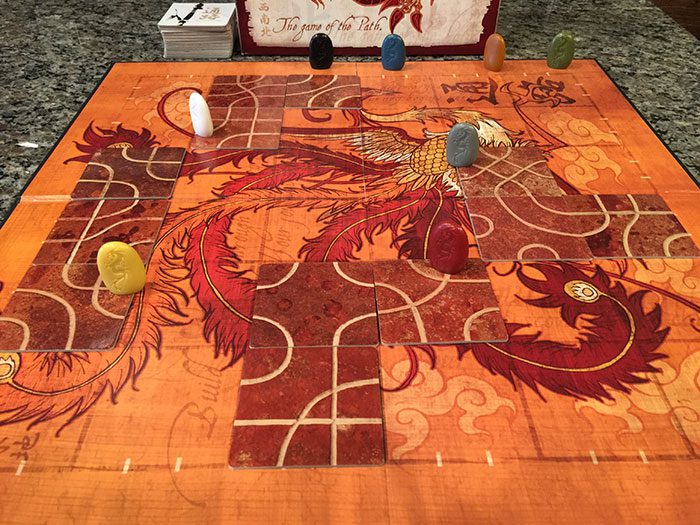
Tsuro was one of the first games I purchased when I got into board gaming, after seeing it featured on an episode of Wil Wheaton’s Tabletop. It’s a gorgeously illustrated, simple tile laying game with a high player count, that also plays quite quickly (15 minutes or less usually), and has easy to teach rules. Kids will love picking a tile and putting it on the board, and moving their pieces along the path. They’ll also get great delight in crashing into other players (especially their siblings).
Tsuro is the only game on this list which has player elimination (a controversial subject). Because the game is so easy to teach, and over so quickly, I feel it’s an acceptable trade off.
Teaches: Pattern matching, basic strategy.
Parents note: For an even simpler game, skip dealing cards to each player and have each child simply draw one card from the top of the pile. This reduces choice down to how the card should be rotated, and can prevent your child with being overloaded by decision. You can even skip the player elimination aspect if you wish and have them start on an unoccupied white line should they run off the board, or into another player.
Honorable Mention
Zombie Kidz, from Iello, is a cute and gross game about saving the world from zombies. Players travel around an 8 inch square board knocking out zombies, and locking the gates of a cemetery to prevent the zombies from breaking out and wreaking havoc on the townfolk. Plays in less than 15 minutes. Zombie Kidz has just the right amount of “gross” that kids love, with cartoony zombies and cute character standees.Teaches: It’s co-op so you can play it with your kids and guide them towards making good choices. Players roll a die at the beginning of their turn and place a new zombie on the colored space matching the die, so it also teaches color matching.
Parents note: Zombie Kidz has a double sided board offering two difficulty levels. You can also add or remove zombies from the board to make the game easier or harder.
Keep in mind these aren’t necessarily my favorite games, but they’re fun, fast, and your kids will love them. More importantly you’ll love spending time with your kids, and introducing them to the best hobby in the world. Keep your eyes open for my next piece, where I cover games good for 5-10 year olds (a great age for gaming).
What games do you like playing with your kids? Let us know in the comments below.
Don’t forget to check out my list of Top 6 board games for older kids.


